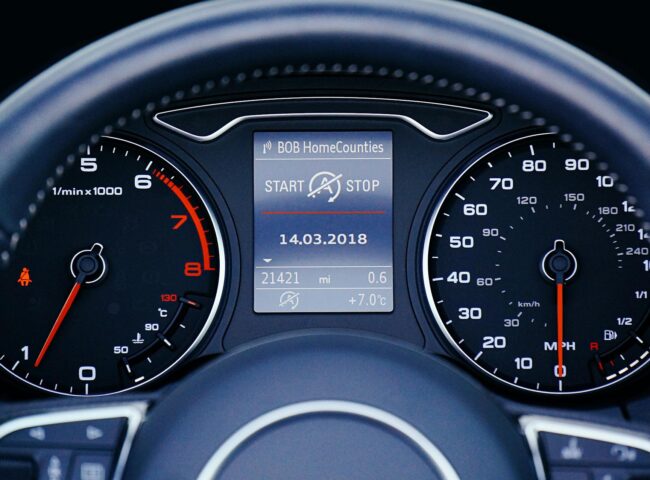Need to file an auto warranty claim but unsure where to start? This article simplifies how to make a claim on your auto warranty, ensuring you have the know-how to efficiently manage this process with confidence. We’ll guide you through gathering documentation, contacting the right entities, and securing claim approval – all with zero fluff.
Key Takeaways
- Understanding the specifics of your auto warranty, including types, coverage, and exclusions, is crucial for making a successful claim.
- The warranty claim process involves initiating contact with the provider, providing essential documentation, securing pre-approval, and choosing a licensed repair facility.
- After filing a claim, negotiate the payment with your provider, manage deductibles appropriately, and maintain regular vehicle maintenance to support future claims.
Understanding Your Auto Warranty Coverage
Navigating through the world of auto warranties can indeed feel like traversing a maze. First and foremost, you must grasp the concept of the two main types of warranties – manufacturer’s warranty and extended auto warranties. While the former comes with a new vehicle and covers certain defects or malfunctions for a set period, the latter is optional and provides additional coverage extending the scope of the original warranty.
However, not everything is covered under these warranties. While most auto warranty covers offer coverage for free labor and parts for a specific timeframe, they often exclude damage from accidents or normal wear and tear and may even require certain maintenance tasks such as scheduled oil changes. Always remember, knowledge is power. Thoroughly reviewing your extended warranty contract and understanding its exclusions will help you make a successful extended warranty claim.
Initiating Your Warranty Claim

Kickstarting the claim process is relatively straightforward. It starts with getting in touch with your insurance provider or the warranty company directly. This initial contact should include providing specific details about your vehicle, such as make, model, and year.
Finding the Right Contact Information
It’s vital to have the correct contact details of your claims administrator readily available. This includes phone numbers and online contact forms. These serve as your starting point in initiating a claim on your auto warranty.
Preparing Essential Documentation
Documentation is the backbone of any successful warranty claim. Here are some important steps to follow when filing a claim:
- Maintain and compile all service records as proof of proper vehicle maintenance.
- Have your auto warranty policy number and detailed service records at hand when filing a claim.
- This can expedite the process and increase your chances of claim approval.
Understanding the Role of Pre-Approval
Before diving headfirst into getting the repair work started, it’s worth noting the importance of pre-approval. This critical step often includes negotiating with the warranty provider to determine the repair costs covered by the claim.
Make sure to comply with the warranty contract’s conditions for pre-approval to avoid any future complications.
Selecting a Licensed Repair Facility
Choosing the right repair shop might seem like a daunting task, but it doesn’t have to be. Your auto service contract outlines where you can take your vehicle for repairs. This could be any licensed auto shop, authorized dealerships, or ASE-certified repair shops. Before starting any repair work, ensure to get an authorization from your warranty provider to confirm the chosen facility’s approval for performing the covered repairs.
Taking the time to understand the company’s reputation and who is providing the warranty can save you from potential headaches down the line. Furthermore, verifying the terms of your auto service contract, specifically whether it covers actual labor costs and if you are required to use remanufactured or used parts in repairs, is key.
Filing the Claim: A Step-by-Step Process

Filing a claim may seem like a daunting task, but with the right knowledge, it can be a smooth process. Firstly, your service contract outlines the claim process, detailing the procedure to make a claim for covered repairs, the reimbursement method, and the estimated timeline for receiving payment.
Backing up your claim with appropriate evidence is indispensable. Here are the steps to follow:
- Take pictures of any damage to the vehicle.
- Document the issues in writing.
- Fill out the application form as required.
- Include proof of purchase for any original parts used on the vehicle if applicable.
After Filing: What Happens Next?
Once your claim is filed, the next step usually involves the warranty company guiding the claimant through the necessary procedures to complete the process. Both parties work together to reach an agreement on the amount that should be paid for the repairs following the submission of a claim.
Handling Claim Approval and Payment
With your car warranty claim approved, the process moves towards payment. The policy holder is required to pay the deductible as part of the claim process.
After the deductible is paid, the warranty company typically handles the remaining payment to the repair facility directly.
Dealing with Applicable Deductibles
Deductibles play a significant role in the warranty claim process. Auto service contracts typically have a deductible that the owner needs to pay each time the vehicle is serviced or repaired.
Many extended car warranties include a $100 deductible, which means you’ll only pay $100 for a covered repair regardless of the actual repair cost.
Maintenance to Avoid Future Claims
Avoiding future claims is as simple as keeping up with regular maintenance of your vehicle. Here are some routine tasks to consider:
- Oil changes
- Tire rotations
- Checking and replacing air filters
- Topping up fluids
- Inspecting the battery
- Frequent inspections by qualified mechanics for signs of wear like cracks, leaks, or other damage
All these contribute to upholding vehicle performance, fuel efficiency, and safety.
Ignoring car maintenance can result in a host of issues, including diminished performance, lower fuel efficiency, a drop in resale value, and a heightened risk of accidents and mechanical breakdowns. Moreover, keeping detailed service records and receipts is mandatory to prove that the vehicle has been maintained as per the manufacturer’s guidelines and to support warranty claims.
Using quality parts and fluids that meet or exceed manufacturer specifications ensures vehicle reliability and often carries better warranties.
Navigating Claim Denials
Claim denials can be a tough pill to swallow. Understanding the reasons behind the denial can help you navigate this process more effectively. Common reasons for warranty claim denials include:
- Non-covered broken components
- Vehicle abuse
- Missed service visits
- Modifications that may void the warranty
Upon receiving a claim denial, it’s essential to ask for the official decision in writing. If the repair facility disagrees with the denial, ask for their written opinion.
Managing a denied warranty claim might appear as unfamiliar terrain, but it need not be so. Here are some steps to follow:
- Start by reaching out to your provider for the appeal process.
- Prepare to present a detailed account of the claim and assessments.
- If the appeal fails and the warranty claim remains denied, consider state consumer protection services or raising your concern through company escalation or social media.
- However, always weigh the cost-benefit of legal action for a warranty claim denial, as legal fees may outweigh the benefit if the claim value is not substantial or the effort is unsuccessful.
Maximizing Benefits from Your Warranty Provider
Maximizing the benefits offered by your warranty provider can significantly improve your experience. Utilize the 24-hour roadside assistance and towing services included in warranties like those from Protect My Car to address issues effectively when on the road. Some car warranty companies even offer the convenience of requesting roadside assistance directly through smartphone applications.
Additional perks offered by extended warranty provider include benefits such as tire repairs or replacements, key fob replacement, and collision discounts. Extended warranties like those from CARCHEX and Endurance not only provide added benefits like roadside assistance but also enhance your experience with rental car reimbursements, gas delivery, and trip interruption services, increasing the overall value of the extended car warranty service contracts. With extended warranty coverage, filing an extended car warranty claim with these providers is a straightforward process, ensuring peace of mind for car owners.
Summary
In conclusion, understanding your auto warranty coverage, initiating your warranty claim, selecting a licensed repair facility, and maintaining your vehicle regularly are all essential steps in making a successful warranty claim. By following these steps, navigating claim denials, and maximizing the benefits offered by your warranty provider, you can take control of your auto warranty claims and ensure that you’re getting the most out of your warranty.
Frequently Asked Questions
How do I claim my car warranty?
To claim your car warranty, you need to take immediate action by bringing your vehicle to a repair facility, authorizing the diagnosis, and having the repair facility contact the claims department for approval. You would then pay the applicable deductible and pick up the vehicle afterwards. Be sure to check your warranty contract for specific repair shop requirements.
How does a car warranty claim work?
When you have a car warranty, you can get repairs at a mechanic’s shop for issues covered by the warranty without paying for them. This can save you significant repair costs.
What’s the difference between a manufacturer’s warranty and an extended auto warranty?
A manufacturer’s warranty comes with a new vehicle, covering defects or malfunctions for a set period, while an extended auto warranty is optional and provides additional coverage beyond the original warranty. Choose the extended warranty for broader protection beyond the manufacturer’s coverage.
What is the role of pre-approval in the warranty claim process?
Pre-approval is crucial as it involves negotiating with the warranty provider to ascertain the repair costs covered by the claim, before repair work begins.
How can I avoid claim denials?
To avoid claim denials, it’s important to understand common reasons behind them, such as non-covered broken components, vehicle abuse, missed service visits, and warranty-voiding modifications. Avoiding these pitfalls can help prevent claim denials.





